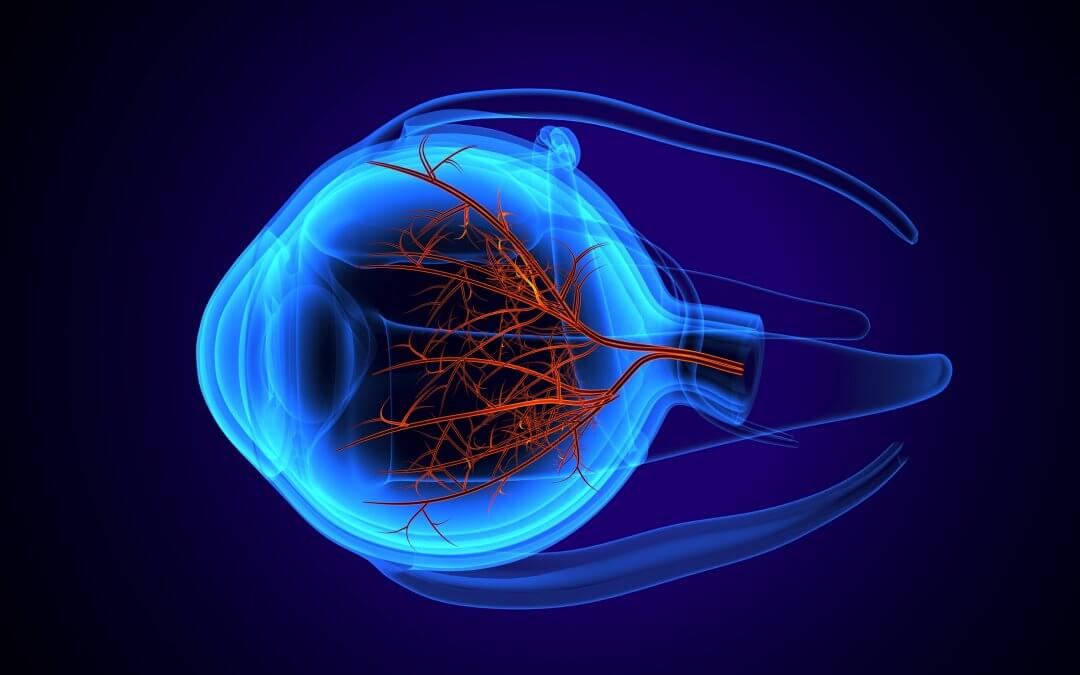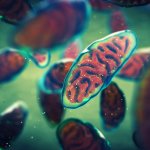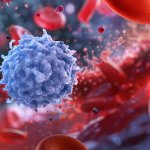Amongst the most promising advancements in the field of regenerative medicine is the development of stem cell therapies. As undifferentiated cells, stem cells have the power to develop into specialised cells that can be used to repair and replace damaged tissues.
It is this ability to specialise that makes stem cells such an exciting focus for research, effectively broadening the horizon of what was thought possible in medicine.
Today stem cells are being used to treat a wide range of conditions, from blood cancers like Leukaemia to metabolic disorders like Krabbe Disease. However, clinical trials in recent years have shown that stem cells may also have applications in treating as-of-yet incurable eye conditions, specifically retinal diseases.
Age-Related Macular Degeneration
Age-related macular degeneration (AMD) is a common retinal disease that arises as a result of damage to the macular through ageing. A small part of the retina – the light sensitive tissue that sits at the back of the eye – the macular is responsible for the sharp, central area of one’s vision.
By causing the macular to degenerate, AMD makes activities like driving, reading and watching TV incredibly hard. It also has the unnerving effect of making faces difficult to recognise. [1]
Unfortunately there is so far no cure for AMD. Available treatments currently range from the prescription of exercise and dietary supplements to eye-injections and laser treatment, all of which merely slow down the progression of AMD.
However, new research suggests that the use of stem cells may go beyond just slowing down the progression of AMD. Incredibly, it may actually be able to reverse the damage caused to the macular. [2]
In a study published in January of this year, researchers at Duke-NUS Medical School looked at using a human retina-specific protein, LN523, for culturing human embryonic stem cells (ESCs). ESCs are pluripotent, meaning they can both self-renew and differentiate into specialised cell types. The researchers’ aim was to create a retinal environment ideal for the differentiation of these pluripotent stem cells into photoreceptor cells. These photoreceptor cells are the ones responsible for absorbing light and converting it into signals that trigger biological processes (seeing, in other words).
Miraculously, results showed that by introducing LN523, researchers were able to cause the stem cells to differentiate into photoreceptor progenitors within just 32 days. Even more surprising was that these new photoreceptor cells successfully engrafted themselves in both rodent and rabbit retinas. Afterwards, in assessing the visual behaviour of the rodents who underwent cell-transplantation, researchers also found significant improvements in vision.
Hence, these promising findings suggest that stem cells may offer the means for potentially replacing lost photoreceptor cells in degenerative retinal conditions, like AMD, thereby offering hope for a possible cure. [3] [4]
Stargardt’s Macular Dystrophy
Stargardt’s Macular Dystrophy (SMD), or Stargardt’s disease, like AMD, is a condition affecting the macula. Unlike AMD, SMD is a rare inherited condition. Passed down through an autosomal recessive pattern, children of parents with changed genes have a 25% chance of inheriting the mutated ABCA4 gene.
This mutation affects the coding for the protein responsible for transporting wastes from the photoreceptor cells in the retina. When these toxic waste molecules pile up in the photoreceptor cells it leads to them deteriorating, along with the vision of the affected person.
SMD, like AMD, causes degeneration in the central area of vision. Additionally, however, SMD can also result in other vision issues, such as sensitivity to light, the appearance of blank or black spots, and a reduction in colour perception.
The onset of SMD usually occurs in adolescence, with related visual impairment becoming pronounced by early adulthood. Currently there is no cure for SMD, with the only available option for sufferers of the condition being the protection of any remaining sight through due-diligence, dietary supplements and lifestyle changes.
Similarly to the way that pluripotent embryo-derived stem cells (ESCs) are being explored for the treatment of AMD, clinical trials are also underway for the treatment of SMD with pluripotent stem cells. These trials seek to repair and replace damaged retinal cells with stem cell-derived healthy cells.
Accordingly, in one such trial from 2015, researchers investigated the ‘safety and tolerability’ of a sub-retinal transplantation of ESCs which had differentiated into retinal pigment epithelium – the cells beneath the photoreceptors in the retina. [5]
The trial was conducted with nine patients aged between 18 and 55, and nine patients aged 55 or over, all of whom had SMD.
Amazingly, vision-related quality-of-life measures increased by between 8-20 points 3 to 12 months after transplantation. This trial, whilst conducted with a relatively small pool, suggests that stem cell therapy is not only a safe option for the treatment of SMD, but a viable one, too.
Retinitis Pigmentosa
Retinitis Pigmentosa (RP) is a commonly inherited retinal disease which causes the progressive loss of photoreceptor cells, resulting in the gradual decline in visual acuity. Like SMD, the onset of RP may manifest in childhood, but the first symptoms are usually spotted in adolescence and early adulthood.
These symptoms normally progress from nyctalopia, otherwise known as night-blindness, to the deterioration of peripheral vision, to the eventual loss of the central area of vision owing to the degeneration of the macula.
Like AMD and SMD, RP currently remains incurable. However, recent clinical trials have suggested that by transplanting specialised stem cells, either ESCs or induced pluripotent stem cells (iPSCs) such as those derived from adult human tissues, into the retina, photoreceptors can be both repaired and replaced. [6]
As with AMD and SMD, stem cell treatment routes for RP are still being explored and have not yet moved beyond the clinical trial stage. However, there is a significant amount of research and evidence to indicate the viability and potential of such treatments in the near future.
Footnotes:
[1] https://www.nhs.uk/conditions/age-related-macular-degeneration-amd/symptoms
FIND OUT MORE, REQUEST YOUR WELCOME PACK TODAY
All you need to know to make an informed decision.
Provide your contact details to request:
– Complete Welcome Pack and Parent’s Guide
– Information via email
– Contact from our specialist advisors









